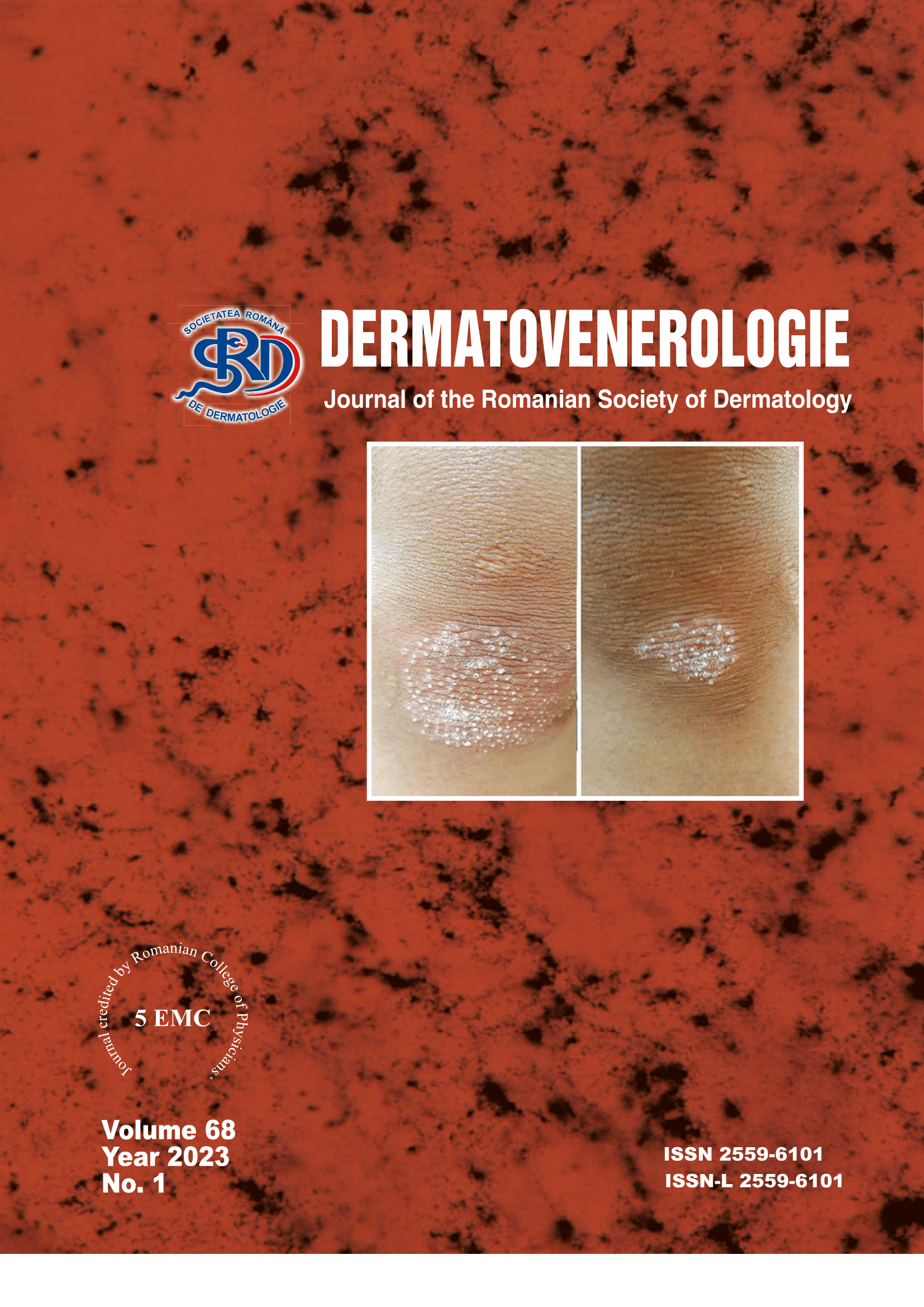Summary
Introduction. Pityriasis rubra pilaris (PRP) is a chronic papulo-squamous disease of unknown etiology, characterized by the appearance of scaly, red-orange plaques, palmo-plantar keratoderma and keratotic follicular papules. The acquired forms are the majority and develop in the 5-6 decades of life, and the familial forms (autosomal dominant transmission) usually appear in childhood.
Clinical cases. We present 4 cases, two with PRP classic adult type and two pediatric cases, of which one boy with PRP circumscribed juvenile type, respectively the other case with the classic juvenile form.
Discussions. The etiopathogenesis of PRP remains unknown, the following hypotheses have been proposed: abnormal metabolism of vitamin A in the skin; the association with autoimmune diseases, cancers or infections, especially HIV. The involvement of the genetic factor is supported by the presence of mutations at the CARD 14 gene level in PRP type V. The diagnosis is clinically suspected and confirmed based on the histopathological aspect, which is suggestive for the diagnosis of PRP, without being specific. There is no consensus regarding treatment, but to date, systemic retinoids appear to be the most effective therapeutic agents. More recently there is interest in biological therapy. Familial forms, whose onset is usually in childhood, have a less favorable prognosis and can evolve throughout life.
Conclusions. Pityriasis rubra pilaris is a rare condition, complex from a social and psychological point of view, which can be found in adults and children of both sexes. Recognizing the skin manifestations of PRP allows the rapid initiation of treatment to limit the evolution of the disease and prevent complications.


